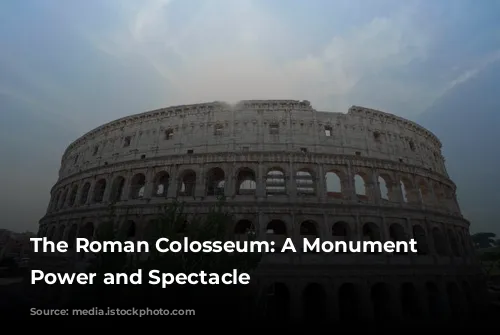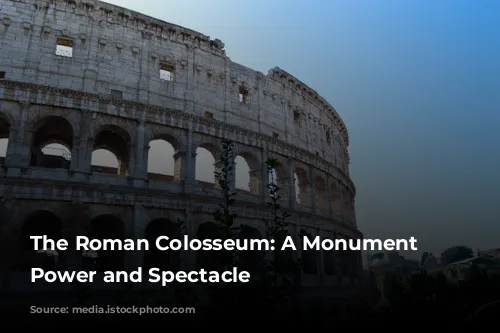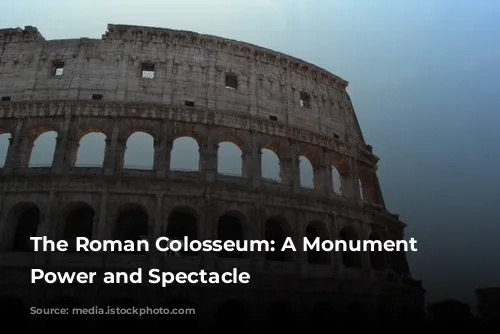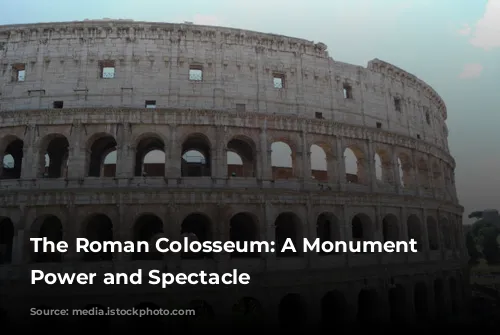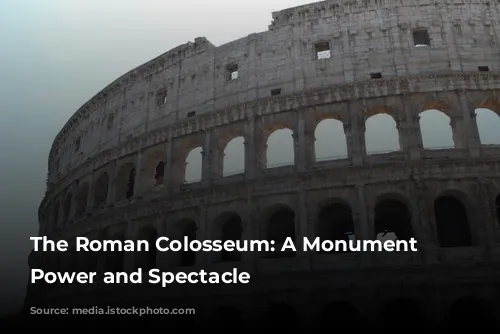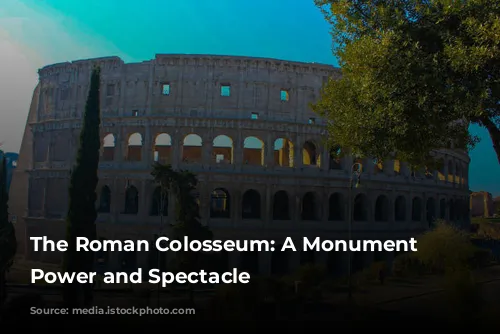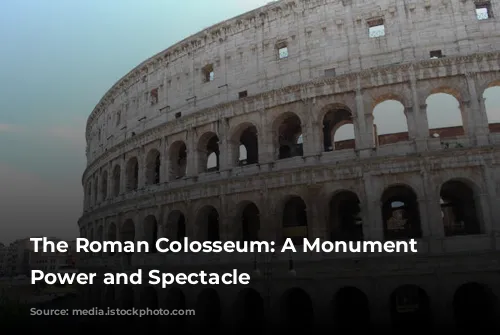The Colosseum, also known as the Flavian Amphitheatre, stands as a monument to the power and grandeur of the Roman Empire. This imposing structure, the largest amphitheatre ever built, is a testament to the ingenuity and skill of Roman architects and engineers.
Started by Emperor Vespasian of the Flavia family and inaugurated by his son Titus in 80 A.D., the Colosseum was a symbol of Roman dominance. The opening ceremony, a spectacular extravaganza lasting one hundred days, showcased the might of the Roman Empire through gladiator battles, animal hunts, and even naval battles.
The Name and the Prophecy
But why is it called the Colosseum? The name originates from a medieval prophecy by the Venerable Bede, who claimed that “Rome will exist as long as the Colosseum does; when the Colosseum falls so will Rome; when Rome falls so will the world”. The prophecy likely stems from the enormous statue of Emperor Nero, known as “the Colossus,” which once stood near the amphitheatre.
A Masterpiece of Architecture
The Roman Colosseum is an architectural marvel. Originally clad in gleaming white travertine stone, the elliptical structure was designed to accommodate a vast audience. Four tiers of seating provided different levels of visibility, with 80 arches on each of the first three floors, decorated with impressive statues.
The Colosseum was built using a revolutionary architectural technique – the arch. This innovative technique allowed the Romans to distribute the weight of massive structures effectively, resulting in durable and impressive buildings.
Echoes of a Lost World
While the Colosseum stands today as a skeletal shell, its grandeur remains palpable. In the Middle Ages, the Colosseum was plundered for building materials, leaving behind the evidence of its past glory.
Despite its stripped exterior, the Colosseum’s interior reveals the intricacies of its design. The complex system of lifts and hoists, used to transport gladiators, animals, and even scenery, is a testament to the Romans’ ingenuity and showmanship.
The Games and the Gladiators
The Colosseum was the stage for spectacular and brutal games, providing entertainment for thousands of Romans. These games, a combination of symbolic spectacle and raw entertainment, served as a means of connecting the citizenry with their leader.
The most popular attraction was undoubtedly the gladiator fights. Gladiators, often prisoners of war or former slaves, competed in the arena for fame, fortune, and freedom.
The Colosseum witnessed a variety of events, including animal hunts, executions, and even unique performances, such as a writing elephant.
A Legacy of Power and Entertainment
The Colosseum, a monument to Roman power, ingenuity, and entertainment, stands as a reminder of the past. While the games are long gone, the Colosseum’s legacy continues to inspire awe and wonder.
The structure itself, a testament to Roman architectural prowess, continues to draw visitors from around the world. The Colosseum, an enduring symbol of ancient Rome, is a reminder of the power and spectacle of a bygone era.
